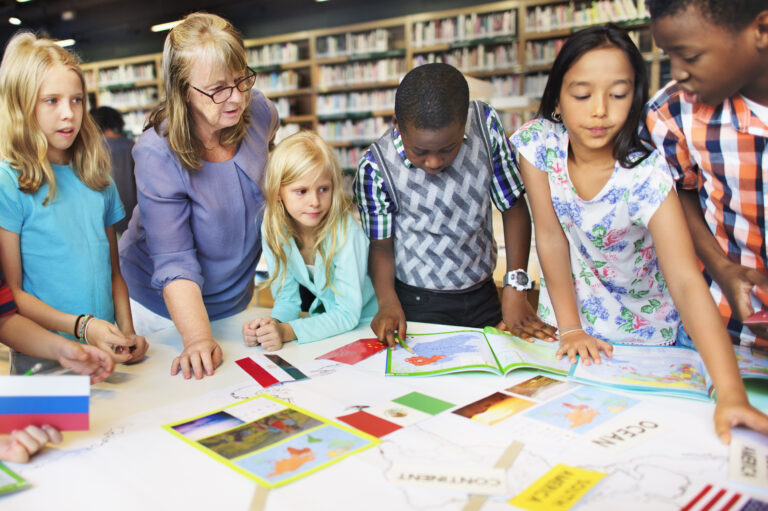Think about the last time a social media post grabbed your attention. Maybe it was a hilarious video, an inspiring story, or a fascinating fact. Whatever it was, it captivated you. Webster’s dictionary defines being captivated as having one’s interest or attention held by something charming, beautiful, or entertaining. Now, imagine if educators planned their lessons with the same intention. How will I captivate my students? What would be the benefits of captivating content?
I recently had a chat with my son about this. My oldest, Roland III, shared that he wants lessons that make him eager to learn. Often, schoolwork feels like a chore, making it hard to retain information. He and his friends can learn but aren’t invested when the material isn’t engaging. They rarely talk about what they’re learning when it feels like a chore.
Education should be about more than just imparting knowledge. It’s about recognizing the humanity of each student, making them feel seen, heard, and deeply known. When students feel this way, their engagement and motivation soar. At CT3 Education, we focus on providing executive leadership and instructional coaching to school leaders to create environments where students can thrive. Our services are designed to help educators build connections and implement strategies that captivate and inspire. So, how can educators make their lessons captivating? Here are a few tips:
1. Incorporate Multimedia and Technology
Today’s students are digital natives. They engage with multimedia content daily. Use videos, interactive simulations, and digital storytelling to make lessons more dynamic. Start a history lesson with a dramatic reenactment video or use an interactive science simulation to demonstrate a complex concept. As Kendrick Lamar said, “We gon’ be alright,” and with the right tools, our lessons can truly resonate.
2. Relate Content to Real-World Applications
Students are more likely to be interested in content that feels relevant to their lives. Show how math is used in architecture or budgeting or discuss how scientific principles impact health and the environment. Making these connections can spark genuine interest and make students feel their learning is valuable. The return on investment (ROI) when teachers relate content to real-world applications is significant in various ways, impacting student engagement, comprehension, and long-term success.
3. Use Storytelling Techniques
Everyone loves a good story. Incorporate storytelling into your lessons to make information more relatable and memorable. Begin a lesson with an intriguing story related to the topic. This could be a historical anecdote, a personal experience, or hypothetical scenario. Storytelling helps to build life-altering relationships with students. Here’s a fitting quote from a Nas’s song “I Can” that aligns perfectly with the power of storytelling in building relationships and inspiring students:
“I know I can, be what I wanna be. / If I work hard at it, I’ll be where I wanna be.”
This line underscores the importance of dreams, hard work, and the belief in one’s potential, resonating deeply with the impact of storytelling in education. It highlights how stories can inspire students to see their possibilities and encourage them to strive for their goals. Sharing personal stories helps students see their teachers as real people with experiences and emotions, fostering a sense of connection and empathy. So, implement storytelling and watch relationship DEVELOP!
4. Create an Interactive Learning Environment
Interactive lessons keep students engaged. Use group discussions, hands-on activities, and problem-solving sessions. Encourage students to ask questions, share their thoughts, and collaborate. This active participation makes learning more enjoyable and effective, making students feel heard and involved. One strategy we coach teachers on is Think, Pair, Share. Think Pair Share is a check for understanding and collaborative learning strategy that creates an opportunity for scholars to be heard and to reflect on new learning through the lens of their own experiences.
5. Gamify the Learning Experience
Turn learning into a game by incorporating quizzes, competitions, and reward systems. Platforms like Kahoot! and Quizizz make it easy to create fun, game-like assessments. Friendly competition can motivate students and make learning more enjoyable.
6. Incorporate Student Interests
Get to know your students and weave their interests into your lessons. If they love sports, use sports statistics to teach math. If they’re into music, analyze song lyrics in language arts. When students see their interests reflected in the material, they’re more likely to be engaged and feel known.
7. Provide Choices and Autonomy
Give students some control over their learning. Offer choices in assignments and projects, letting them pick topics or formats that interest them. This autonomy can make learning feel more personalized and engaging.
8. Foster a Positive and Supportive Classroom Environment
A supportive environment enhances student engagement. Build strong relationships, show enthusiasm for your subject, and create a safe space for learning. Encourage a growth mindset, where mistakes are seen as opportunities for learning. When students feel supported, they are more likely to take risks and engage deeply with the material.
Conclusion
Captivating student curiosity is about more than making lessons fun—it’s about making them meaningful, relevant, and engaging. By incorporating multimedia, relating content to real-world applications, using storytelling, creating interactive environments, gamifying learning, incorporating student interests, providing choices, and fostering a positive environment, educators can ignite the spark of curiosity in their students.
Remember, captivated students are more motivated, retain information better, and develop a lifelong love of learning. Let’s strive to create classrooms where humanity is recognized, and students feel seen, heard, and deeply known. With the support and guidance from CT3 Education, we can build these engaging and inspiring educational experiences.
By Roland T. Woodson Jr, Associate, CT3
Check out CT3 Education programs such as No-Nonsense Nurturer, Real Time Teacher Coaching, and Real Time Leadership Coaching to find out more about Professional Development for Teachers and Leaders, classroom management strategies, and building relationships with students and their families, and properly addressing important issues in the classroom and school.
Category: Coaching, Education, Leadership, No-Nonsense Nurturer, Real Time Leadership Coaching


